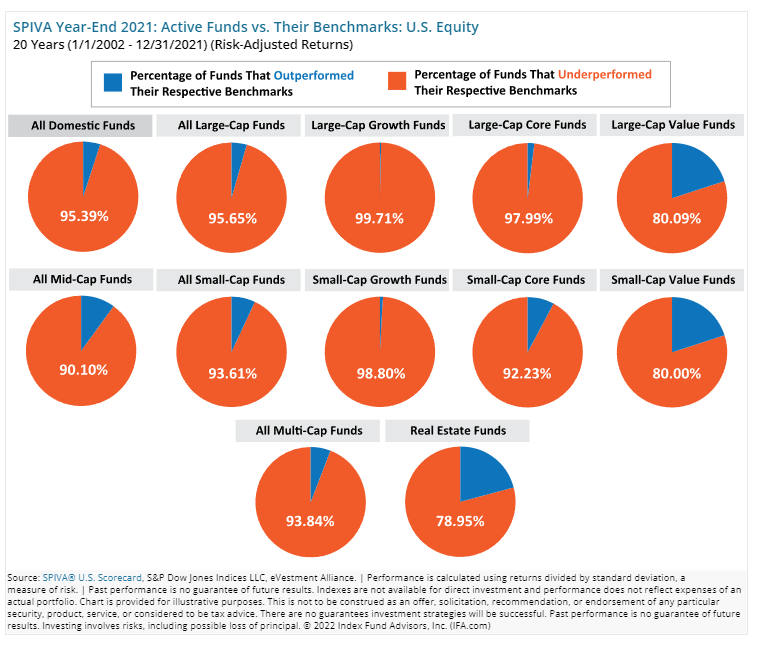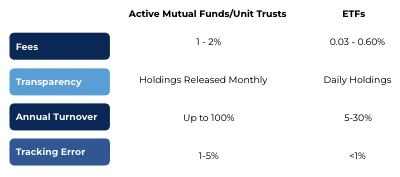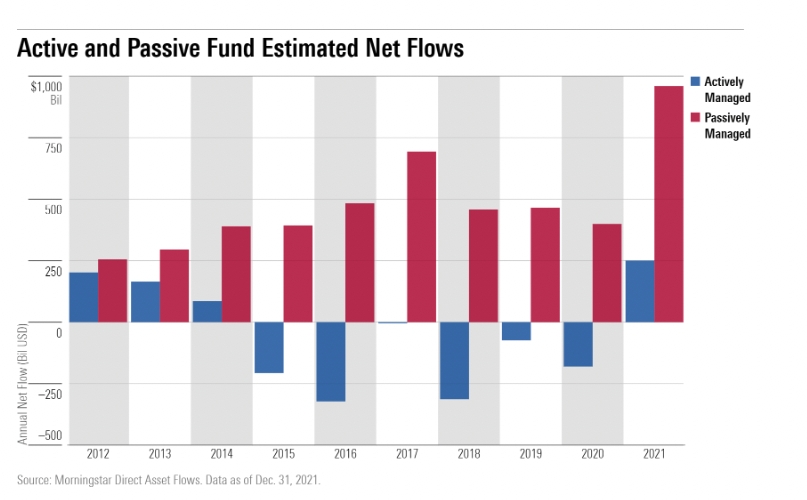Which is the better investment – ETFs or mutual funds? This is a question we get asked often, so we sat down with Grace Cheng, Syfe’s Director of Investment Research, to get the lowdown.
ETFs and mutual funds (aka unit trusts) seem to serve the same purpose, don’t they? They’re like baskets of various investments. Are there material differences between them?
Grace: ETFs and mutual funds may appear similar in that they both offer diversification benefits and give investors access to a variety of asset classes such as stocks, bonds, and commodities.
But they have significant differences.
The most obvious and easiest to quantify would be cost. The expense ratios of many unit trusts and mutual funds in Singapore range from 1% to 2% a year. In comparison, Syfe Core portfolios have an average expense ratio of just 0.16% to 0.24% a year.
This fee difference holds true even for unit trusts that track an index, also known as index funds. For example, the largest S&P 500 ETFs charge 0.03% to 0.07% per year in expense ratios. A Singapore currency S&P 500 index fund can cost 5 times as much, even with trailer fee rebates.
The second difference is how they’re managed. ETFs are a basket of investments that mirror the performance of an index such as the S&P 500 or MSCI World. They are passively managed, unlike mutual funds which are often actively managed.
Studies have shown over and over again that actively managed funds almost always underperform passive investments in the long run. According to the SPIVA US Scorecard for 2021, more than 80% of all active fund managers have underperformed their benchmarks over the past 20 years.

As passive ETFs track a benchmark and gain systematic exposure to a sector, they often have lower expenses and costs compared to unit trusts. Indeed, over the years, such fees can make a substantial difference in your returns.
The third difference is how they’re traded. While ETFs can be bought and sold on a stock exchange just like any other stock, investors will have to take the unit trust’s listed price at the end of the trading day whenever they buy or sell units.
Which one is safer, mutual funds or ETF investments?
A fund is not safer simply because it’s classified as an ETF or a mutual fund. Rather, the risk level depends on the underlying holdings. An ETF and mutual fund that invests in growth stocks will have similar risk levels, but will carry relatively higher risk than an ETF and mutual fund that invests in government bonds.
However, both ETFs and mutual funds offer more diversification than, say, investing in a few individual stocks or bonds. When the value of a particular investment falls, it has less effect on the entire ETF or mutual fund portfolio.
What are some ways to assess ETFs that can fit in my portfolio?
Syfe’s investment team curates more than 100+ ETFs, narrowing it down from 8000+ globally.
Here are some qualitative and quantitative attributes investors should consider:
- How is the ETF gaining exposure to the sector? For example Gold, there are ETFs that hold physical gold, ETFs that hold companies that mine gold and ETFs based on gold futures. Or is the ETF giving you exposure to renewable energy companies globally, or just in the US?
- How is the ETF tracking that sector? Most passive ETFs tend to track an index that is market-weighted, so the largest companies or holdings have the highest weight. However, there are also alternative ways to allocate weights to holdings: like the Invesco S&P 500 Equal Weight ETF vs the popular Vanguard 500 Index Fund ETF. There are also high dividend ETFs that do dividend weighting, so giving companies that pay higher dividends a larger allocation.
- ESG considerations: Now there are ETFs that take ESG scores and risks into account, allocating more to companies that are seen as ESG leaders and have a higher score from ESG providers.
Quantitative Attributes:

What else should investors consider before they make the choice between ETFs and mutual funds?
Investors should look under the hood at all potential fees, not just the expense ratio.
For instance, the expense ratio tells you a great deal about your ETF or unit trust, but it doesn’t show the full costs you’ll pay. Transaction costs and other fees such as brokerage commissions or sales charges are not included in a fund’s expense ratio.
Transaction costs for actively managed unit trusts tend to be much higher compared to ETFs. Traditional open-ended unit trusts buy and sell securities based on cash flows from shareholder activity, selling portfolio holdings to raise cash to fund redemptions and buying securities using the cash received from in-flows.
ETFs, on the other hand, are traded on the exchange where sellers of ETF shares meet with buyers of ETF shares. ETFs thus typically engage in portfolio transactions only when needed, such as to track changes in the composition of the underlying index. As such, annual turnover for ETFs is usually lower, translating to lower transaction costs.
Can you shed light on the differences in bid-ask spreads for ETFs and mutual funds?
As ETFs trade on an exchange like a stock, investors pay a bid-ask spread. It’s simply the difference between the price someone is willing to pay for a security (the bid) and the price someone is willing to sell that asset (the ask). Typically, an ETF’s bid-ask spread will be closely correlated with bid-ask spreads of the underlying holdings. So if the underlying holdings are highly liquid, the bid-ask spreads for them will be tighter and consequently, the bid-ask spread for the ETF will be narrower too.
As mutual funds and unit trusts do not trade on an exchange, there is no explicit bid-ask spread. However, there is still an implicit one because investors buy and sell their units at net asset value, which gets reported daily after market close. Each time units are created or redeemed, the portfolio manager still has to use the proceeds or redemptions to buy and sell underlying securities and pay the bid-ask spread for those transactions. Similarly, if these securities are thinly traded, the large spread could even negatively impact fund performance. As such, the spread is a shared cost incurred by all unitholders on a daily basis.
ETFs look like the better option for investors. There’s even a trend of mutual funds converting to ETFs! What might be some advantages of investing in mutual funds, then?
ETFs have become tremendously popular in recent years. According to Morningstar, $1.8 trillion has flowed into stock ETFs over the last 10 years, but over $900 billion has flowed out of stock mutual funds. This suggests the growing shift in the attitudes of investors from mutual funds to ETFs.

There are still benefits to mutual funds and active management though! For instance, some investors might find that active management with a specific strategy or a less-efficient market can complement their broad-based ETF investments. These could be niche sectors where deeper fundamental research may come in useful, and where active managers can add value. More generally, mutual funds offer options and structures that may not be available for ETFs – for example, currency hedged share classes that make regular distributions and potential tax implications.
But by and large, research has shown that most active managers aren’t able to consistently beat their benchmarks and allocation to active managers and mutual funds would work better as a satellite allocation.
Is this why Syfe uses ETFs in its Wealth portfolios? How are the ETFs chosen?
That’s right! At Syfe, we use ETFs as the building blocks of our portfolios to keep investing costs as low as possible for our customers, while preserving transparency and efficiency. This is also why we only select ETFs that are highly liquid.
Additionally, we’ve optimised our trading process to buy or sell ETFs near their closing prices. Trading volumes tend to pick back up towards the end of the day, as large institutional investors look to close out positions or enter new ones. Higher volume means extra liquidity and tighter bid-ask spreads. This further minimises the impact of bid-ask spread on our ETF portfolios.
How can investors buy ETFs?
An easy, hassle-free option is through Syfe Wealth. Depending on your investment goals, you can choose Syfe Core portfolios for long-term investing, and / or Syfe Select thematic portfolios for exposure to global megatrends.
With Syfe Core, you’ll be investing in stock, bond, and gold ETFs for well-rounded diversification across geographies, asset classes, and sectors.
If you prefer a self-directed approach, you can buy individual ETFs directly through a brokerage platform like Syfe Trade. The advantage of using Syfe Trade is that you get free trades every month and low commission fees for trades outside your free trade benefit!


